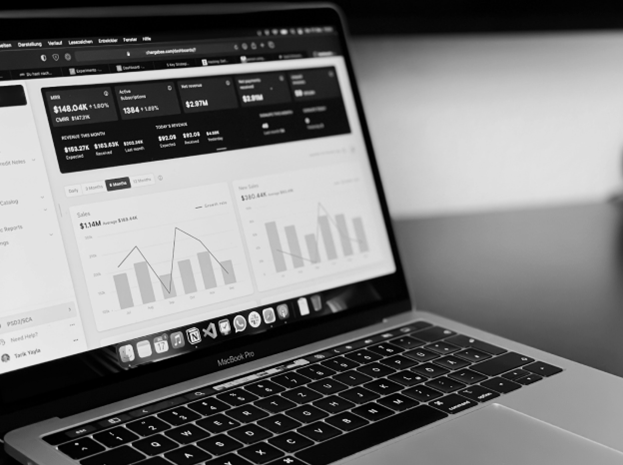Determining the right price for your products or services is important for business success. But how do you discover that perfect price point? The answer lies in conducting a detailed market research pricing analysis.
Market research price analysis involves studying the market to determine the right price for a product or service. This process helps in setting competitive prices that attract customers while ensuring profit.
This guide will walk you through the steps and methods for conducting a successful market research pricing analysis. This knowledge will ensure your pricing strategy aligns with your business goals.

What is Market Research Price Analysis?
Market research price analysis is a vital component of any successful business strategy. It involves evaluating various factors to determine the optimum price for a product or service. This process is crucial for maintaining optimal price points in a dynamic market.
There are Several Types of Price Analysis that Businesses Employ:
- Cost-Based Pricing: This method involves calculating all expenses associated with producing and marketing a product. Then, adding a desired profit margin to the cost. For example, if a smartphone costs $200 and the desired profit margin is 30%, the price would be $260.
- Competitive Pricing: A business sets prices based on competitors’ charges for similar products or services. For instance, if Company A sells a laptop for $1000, Company B might price its similar laptop around the same range.
- Value-Based Pricing: This approach focuses on the perceived value of a product or service to the customer. Luxury brands often employ this strategy, pricing their products higher to convey uniqueness and superior quality.
For instance, companies like Apple carefully balance cost-based pricing with their brand image in the tech industry. This is to command premium prices for their products.
Similarly, airlines employ dynamic pricing strategies, adjusting ticket prices based on factors like demand and time until departure.
Market research price analysis is a diverse process crucial for your business. You can set prices that drive market success by understanding cost, competition, and customer perception.
Why is Product Pricing Research Important?
Before entering the details about conducting pricing research, let’s recognize why this process is so vital.
Product pricing research lets you decide how much to charge for your offerings. It considers various factors, including:
- market demand
- competition
- costs
- customer perceptions.
By including pricing research in marketing research, you can optimize your pricing strategy to maximize profits and secure a larger market share.
Collecting Data for Pricing Research Methods

The core element of an effective market research pricing analysis is data. The type of data you collect for your research directly decides the outcome of your pricing method.
Below are Some of the Most Effective Ways of Gathering Data for your Pricing Research Analysis:
1. Competitor Analysis
Begin by closely examining your competitors. What are they charging for similar products or services? Are they positioning themselves as premium or budget options? This information is the foundation for your pricing strategy and provides valuable insights into market dynamics.
2. Customer Surveys
Gathering insights directly from your target audience is invaluable. Design surveys that include questions about pricing preferences, willingness to pay, and perceived value. Analyzing the responses will grant you a deeper understanding of your customers’ pricing expectations.
3. Price Sensitivity Analysis
Understanding how responsive your customers are to price changes is paramount. Analyze data to identify the flexibility in your offer. This data equips you to make pricing adjustments that maximize revenue without turning away customers.
4. Conjoint Analysis
For a more advanced approach, consider utilizing conjoint analysis. This method aids in determining the optimal combination of product features and their corresponding prices. It reveals customers’ trade-offs, enabling you to fine-tune your pricing strategy.
By implementing these pricing research methods, you’ll gather invaluable insights into your market. These insights empower you to develop a well-informed pricing strategy that maximizes profit. Also, it allows you to position your offerings as your customers bargain a great buy.
Exploring The Van Westendorp Price Sensitivity Meter
The Van Westendorp Price Sensitivity Meter (PSM) is a market research technique used to assess consumer price preferences and sensitivity. Named after its creator, Peter Van Westendorp, this method helps businesses determine optimal pricing for their products or services.
The PSM relies on asking buyers a series of four pricing questions:
- Point of Marginal Cheapness (PMC): At what price would you consider the [product/service] to be so inexpensive that you would question its quality?
- Point of Marginal Expensiveness (PME): “At what price would you consider the [product/service] to be so expensive that you would not buy the product?”
- Price at Which the Product is Getting Expensive (PWE): “At what price would you consider the [product/service] to be getting expensive, but you would still consider buying it?”
- Price at Which the Product is a Bargain (PWB): “At what price would you consider the [product/service] to be a bargain—too good a buy to pass up?”
You can identify an acceptable price range by analyzing the responses to these questions. Also, you can determine the price point at which demand drops off significantly. This information is invaluable for setting prices that align with consumer perceptions and maximize gains.
The Van Westendorp PSM is a valuable tool in the arsenal of market researchers and pricing strategists. This tool ensures you are not leaving money on the table as a business.
Crafting a Market Analysis Pricing Strategy
With your pricing research data, it’s time to formulate a resilient market analysis pricing strategy. Here’s the approach:
1. Segmentation
Divide your market based on pricing preferences, demographics, targeted marketing, or other relevant factors. Tailor your market research pricing strategy to the unique needs and preferences of each segment. Ensure that your pricing effectively resonates with different customer groups.
2. Value-Based Pricing
Align your prices with the perceived value of your product or service. Customers who perceive substantial benefits are often willing to pay more. Effective value-based pricing can enhance your brand’s reputation and foster customer loyalty.
3. Competitive Pricing
Set your prices based on the rates charged by your competitors. Decide whether to be a price leader with premium pricing or opt for lower prices to gain a competitive edge. The key lies in a meticulous analysis of your competitive landscape.
4. Penetration Pricing
Consider introducing your product at a lower price to gain a foothold. This strategy can be particularly effective for newcomers or when launching a new product line. Over time, you can gradually increase your prices.
5. Dynamic Pricing
In today’s fast-paced markets, dynamic pricing is gaining prominence. Adjust your prices in real-time based on demand, time, and customer behavior. Dynamic pricing enables you to respond rapidly to market fluctuations.
You can incorporate these approaches in your pricing analysis business plan for implementation.
Implementing Your Pricing Strategy
Always remember that you should be flexible with your pricing strategy in marketing. It must evolve as market conditions change.
Monitor your pricing strategy’s performance regularly and implement changes as necessary. Additionally, consider the following tips:
- Offer tiered pricing options to cater to various customer segments.
- Conduct A/B tests to assess the impact of price changes on conversion rates and revenue.
- Keep a close eye on your costs to ensure your pricing remains profitable.
Now, let us discuss why you should consider hiring a market research firm for your market pricing analysis.
Also Read: The Key to Successful Pricing Strategies: Insights from Product Pricing Research
Why You Should Hire a Market Research Firm for your Pricing Analysis?
The steps in conducting an effective market research pricing analysis might be demanding. This is especially true for a startup. Employing an expert market research company with a deep knowledge of your market is crucial. For example, Researchers is a leading market research firm in the UAE and Dubai markets.
While the initial cost of hiring a research firm might seem costly, the concurrent gains outweigh the investment. The benefits of hiring an expert product pricing analysis expert include:
- Specialized Expertise: Marketing research firms have dedicated teams with technical skills and experience in conducting comprehensive market analysis.
- Unbiased Evaluation: Being external entities, they provide an impartial perspective without internal biases, ensuring the analysis is objective and accurate.
- Advanced Tools and Technology: These firms have access to state-of-the-art research tools and technologies. This enabled them to employ advanced methodologies for precise results.
- Time and Resource Savings: Outsourcing market research allows you to focus on core business operations. You benefit from the expertise of specialists, saving you time and resources.
- Broader Industry Insights: Marketing research firms often work across various industries. They bring in a wealth of knowledge and best practices from different sectors that can enhance your market strategy.

Final Thought
A market research pricing analysis is crucial for developing a successful pricing strategy. By leveraging pricing research methods and aligning your approach with market insights, you can:
- Optimize pricing to attract customers. A large difference in prices affects turnover.
- Maximize profits.
- Achieve your business goals.
Remember, pricing is not a one-size-fits-all endeavor. Your strategy should be dynamic, responsive, and tailored to your target audience’s preferences. With practical pricing analysis, your business can thrive in a competitive marketplace. Hiring an expert market research firm for your analysis might be necessary to achieve effective price analysis. For instance, Researchers is a leading market research firm in the Dubai, UAE markets. This investment provides the necessary information and lets you focus on other business aspects.

